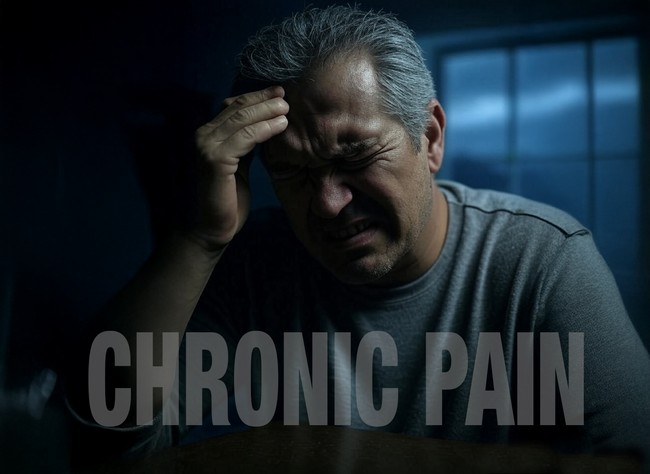
The Thread Binding: Four Very Different Lives
Truth still separates honest medicine from bureaucratic medicine, something that I saw again when four people reached out with nearly identical stories.
They come from different regions, different ages, different lives. They share one ordeal: They live with verifiable medical injuries and encounter a system trained to see danger instead of suffering.
Each voice stands on its own, and connecting them reveals something colder than incompetence: a refusal to see human beings.
Barbara: Proof on X-Rays, Treated Like an Offender
Barbara lives with degenerative disc disease, spinal stenosis, and arthritis so severe that surgeons replaced both shoulders. Her injuries appear on scans. No speculation. No gray area. She still faced suspicion month after month.
Every month, without fail, I was required to give a urine sample. I had to pick up my prescription in person. It could not be sent to the pharmacy. I was required at each appointment to see a PA who asked me the same questions: had I borrowed drugs from anyone else, did I share my prescription, etc.
At 75, after a lifetime of work and no criminal record, she felt more like a parolee than a patient. Her line cut deepest.
I still think of the doctor appointments as something akin to checking in with my probation officer after a lengthy stint in prison.
A woman with a documented disease walked into clinics and found her dignity stripped by protocols created for addicts she never resembled.
When she finally stopped the medication just to regain a sliver of peace, she lost mobility and lost the social life she had built over decades.
The system did that, not her pain.
A Combat Veteran: Twenty Years, One Dose, Endless Suspicion
A 27-year combat veteran with a service record that reads like the cost of war carved into bone:
- Shot twice
- Blown up three times
- Helicopter crashes
- A C-130 crash
- Nerve damage
- Compression through nearly every joint and vertebra
- Frostbite was so severe that he almost lost some of his toes
He has been on a stable dose of the same small prescription since 2005, with no dosage escalation or addiction, and he doesn’t have any DWIs or criminal history, yet he faces threats.
Doctors have threatened me fpolice [sic], referred me to drug abuse programs, and given me NARCAN with every refill of a small dose of narcotic prescribed drugs that are not needed every day, but when they are, it is what makes it possible to get out of bed that day.
This situation is from a man who served under fire, battling his own government for relief measured in milligrams.
His injuries can’t improve; his spine won’t magically uncompress; and his nerves won’t regenerate.
Policy fear still paints him as a liability serving a country that now doubts his word more than his wounds.
A Social Worker Who Saw the Pattern From the Inside
Dory is a licensed clinical social worker at a Nevada clinic who cares for older adults with kidney failure. She worked with confident, retired homeowners, people who paid bills on time and lived quietly, and with no connection whatsoever to street drugs.
She heard their stories and began warning others.
New patients are often viewed with suspicion, as if walking in with needles hanging out of their arms. Pain is routinely undermedicated, and calls often go unanswered. If a patient under contract with a pain management doctor is administered pain medication in an ER, that can violate their contract and result in being discharged.
She saw the cruelty behind the policy.
Requests for temporary medication adjustments often go unanswered, leaving them to face severe post-surgical pain.
Her testimony matters because she stood inside the machinery that treated compliant adults with objective proof of pain as potential threats needing constant policing.
Patients suffered, and clinicians feared losing licenses more than they feared leaving someone in agony. A healthcare worker with no agenda saw the same patterns that patients described.
Reece in Texas: Years of Documentation Still Not Enough
Reece, a former RN and administrator, survived a liver transplant, multiple fractures, spinal compressions from T-7 through L-4, and permanent intestinal complications.
He lived on hospital floors, managed care systems, and trained under leaders who built the pain-scale tools used nationwide.
Although he knew the medical language, he still faced suspicion, dismissal, and punishment.
As an RN and hospital administrator, I was furious about the poor quality of care and the many Joint Commission continuity of care standards that were violated. Their response was to fire me as a patient for raising a stink about it.
He went cold turkey when a clinic failed to send his refill, even after he provided prepaid envelopes and a warning. That alone speaks volumes.
He captures the structural rot better than any academic analysis.
You are definitely treated like a criminal and a drug seeker. Pain management clinics are inflexible, do not listen, and care only about expensive monthly drug screens. They do the minimum to get paid and avoid a lawsuit.
He pointed to something policymakers avoid discussing: States that criminalize even hemp products leave patients with no safe alternatives.
Alcohol isn’t an option because of his transplant history, yet the response from the state still moves towards further bans.
His last line felt like a gut punch, something millions of chronic pain patients whisper in the dark.
When they outlaw hemp, it will probably be time to move if I survive that long.
It’s a sentence that carries more weight than any statistic.
Four Lives, One Verdict
Barbara.
The combat veteran.
Dory.
Reece.
Four stories from four corners of the country: Four sets of injuries are medically proven and medically documented. Each person walked into clinics seeking relief, and met a system trained to protect itself rather than those in pain.
Fear replaced compassion; protocol replaced judgment, and suspicion replaced medical reasoning.
The crisis born from the fentanyl panic created a new situation that ordinary Americans must now endure. Bureaucracy in all forms became a wall between human beings and humane care.
Final Thoughts
Something profound is revealed when a society treats people with proven pain as criminals. Their fears of litigation, regulators, and headlines put medicine in a defensive stance; it’s a posture that punishes millions whose only “mistake” they made was needing help during a moral panic about drugs they’ve never misused.
There lives a fairer country inside us, one that waits for lawmakers to trust its own people again.
Pain should never become a prison sentence: It should stay as a condition that demands honesty, humility, and courage to treat.
Let Us Know
For anyone living with chronic pain who has felt dismissed, doubted, or shoved aside, I want to hear from you.
These columns grow stronger when people speak openly about what care looks like in the real world, not the scripted one in policy handbooks.
If you’re willing to share, you grant permission for PJ Media to edit, publish, and use your story without compensation. Edits will only be for typos and grammar, not content.
Visit the Contact Us page, and put “Dave Manney: Chronic Pain” in the subject line.
How you share your story is up to you: request anonymity or your first name, and a few honest paragraphs about your condition.
Why PJ Media Matters
Work like this becomes possible because PJ Media refuses to run from challenging subjects or hide behind corporate language.
A subscription helps keep space open for stories that powerful institutions prefer to bury.
Support independent commentary.












